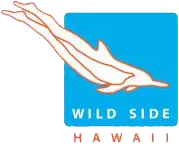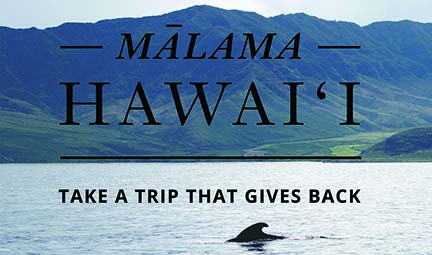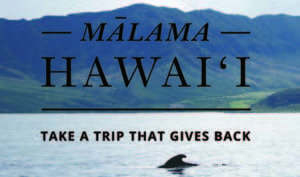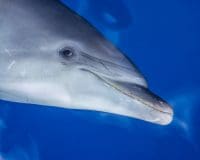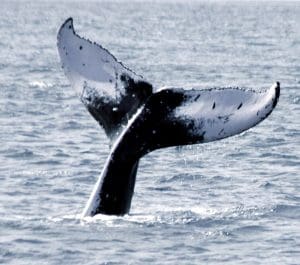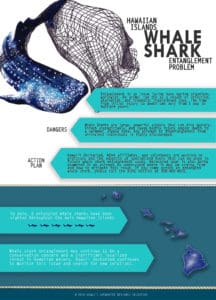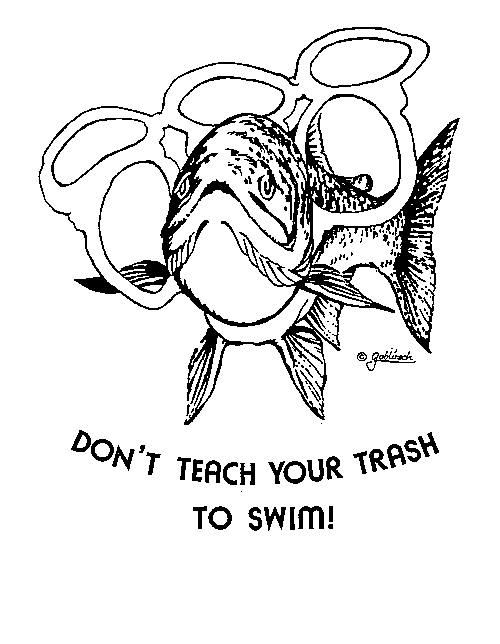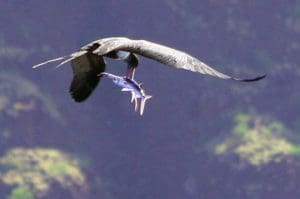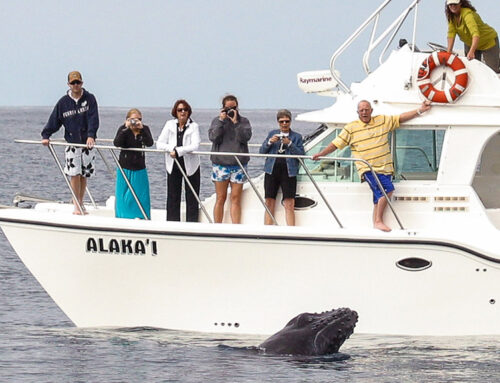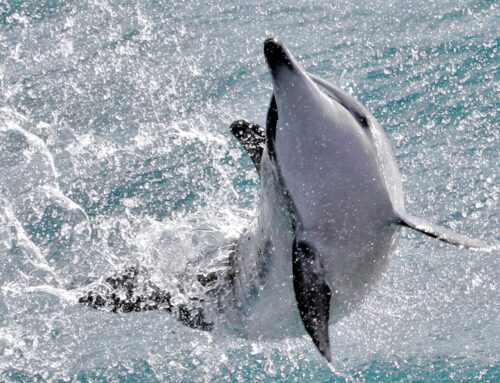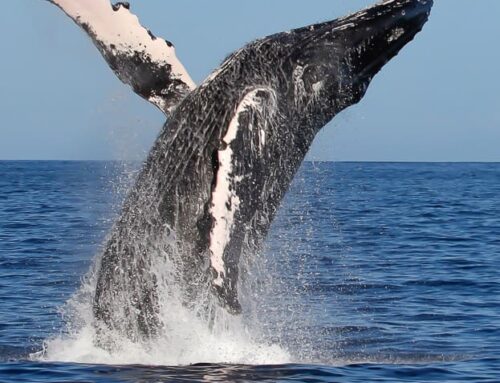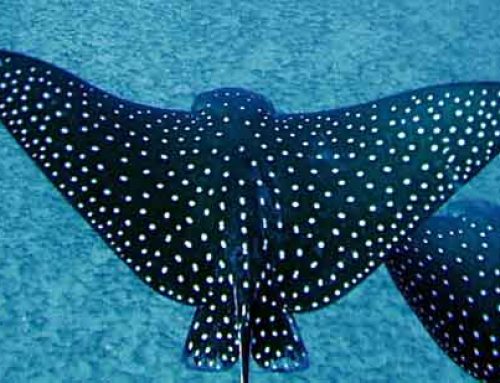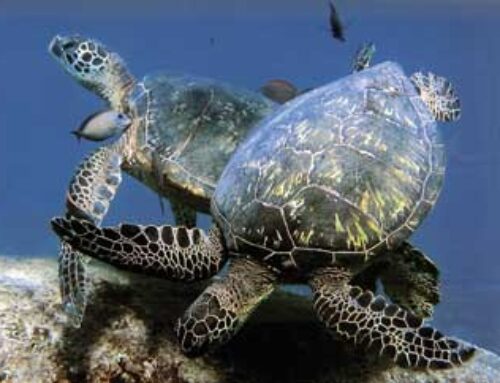Citizen Science Oʻahu, Mālama Hawaiʻi
In Hawai‘i, we have a proverb that says “He aliʻi ka ʻāina, he kauwā ke kanaka”: “The land is a chief, and man is its servant.” In our worldview, there is no separation between nature and people; just as the sea takes care of us, we take care of the sea to Mālama Hawaii.
Citizen science gained through our O’ahu boat tours help us to protect, preserve and create sustainable practices. Data obtained alongside our biologist/naturalist crew is presented to and helps to influence scientists and local communities. Methods learned can easily be used to protect your own backyard or wherever you may wander.
Partners using photos and info from our tours
Research Photography – Dolphins and Whales of Oahu
Educating both visitors and the community, experts on our dolphin and whale watching tours foster lifelong love of marine life. Often, tour boats are the first line of defense when it comes to spotting and reporting entanglements and injuries. Whale and dolphin watching vessels are on the water way more often than scientists can be. They collect important data, such as fluke photos for scientists to track, and also by report species and behaviors they see.
Our charters head offshore seeking our more endangered and lesser studied species. Target species are the Hawaiian false killer whales, pilot whales, pygmy killer whales, beaked whales and even dwarf sperm whales. When encountered, observers (you!) grab a whiteboard and record how many individuals, any babies present, injuries and other notables. You may help with taking id photos of individuals for population and distribution findings. This information is passed on to the quite prolific Cascadia Research Collective for cataloging and analyzing. PUBLICATONS CO-AUTHORED
Be a citizen-scientist and submit your marine wildlife sightings from any location around the world. Whale & Dolphin Tracker app, available from the App Store, allows you to log sightings in real time, create a full GPS track, and upload photos from your mobile device. Your contributions will add to a global database that will help researchers track and monitor cetaceans, determine patterns of species distribution, and study marine animal interactions with their environment. You can also contribute to whale health via cell phone apps like iNaturalist and Whale Alert, which reports deceased or distressed whales to NOAA.
Wildlife Photography Tours – facilitating whale and dolphin conservation
Mālama Hawaii with Humpback Whales
It’s a special moment, watching a gigantic humpback whale going for a deep dive. The whale’s back arches and the tail swings up, disappearing below the surface like the pointed toes of an Olympic diver. The camera fires off.
We submit our photos of humpback whale flukes to HappyWhale who engages citizen scientists using conservation photography identifying individual whales. by their unique markings, and tracks them around the globe. To date (2022) we have submitted 869 photos from 332 encounters – with 285 different individuals identified.
A whale we photographed back in April 2017 was identified as “Flint”, and in 2018, was identified in both Mexico and Hawaii, in the same season. **Super** rare!
Darling JD, Audley K, Cheeseman T, Goodwin B, Lyman EG, Urbán RJ. 2022 Humpback whales (Megaptera novaeangliae) attend both Mexico and Hawaii breeding grounds in the same winter: mixing in the northeast Pacific. Biol. Lett. 18:20210547. Download PDF
Have some extra time for virtual voluntourism? Snapshots at Sea – filters through photos submitted to HappyWhale where you will answers photo submission questions.
Green Sea Turtles Mālama Hawaii
Every year green sea turtles travel 12-hundred miles round trip on a migration from foraging habitats. Starting in Hawaii, to nesting areas in the French Frigate Shoals of the Northwestern Hawaiian Islands. Each year, researchers spend several months monitoring honu nesting activity, counting nests and keeping track of growing populations. They set up camps and spend days and nights tagging, and logging every turtle they see. This year, over 400 nesting turtles were tagged, and identifying numbers painted on their shells. Once important habitats are known, turtles can be better managed, especially for nesting females.
Using voluntourism, when see a numbered or tagged turtle, without disturbance we take down the number or take a picture and report it to NOAA by calling 1-888-256-9840 or emailing respectwildlife@NOAA.gov
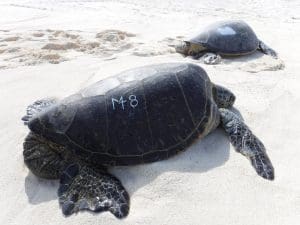
Green sea turtle with etched number on its shell in non-toxic paint on the shores of French Frigate Shoals, Northwestern Hawaiian Islands (Photo: NOAA Fisheries/Marylou Staman).
Whale Shark Sightings
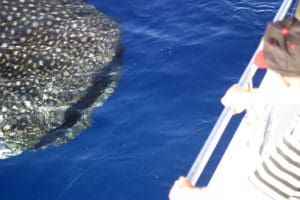
Our Oahu charters have came across and identified a handful of new individuals on the Waianae coastline here since this effort began in 2018. As they are newly id’d individuals, we get to name them! So far we have Alaka’i, Noelle, Jaxson (entangled), JJ, Kalea, Lynn, Mackey, and Giant. We actually found “Giant” first, but shared that sighting with another tour boat and their photographer phoned her photos in before we even got back to the dock. That’s a thing! Science is exciting! We phone our sightings in right away now…
Our partner Hawaii Unchartered Research Collective (HURC) uses voluntourism and conservation photography for id. Skin patterning behind the gills of each shark and any scars (entanglement!)- sighting data (location, size, gender) are recorded along with id photos. During collection, it is recommended to stay about 10-12 feet away.
Mālama Hawaii with Marine Debris/ Plastic Monitoring
While underway, we’ll stop for retrieval of plastic bags, ‘dead’ balloons, or whatever other marine debris found. It’s also good ‘man overboard’ practice!
Ghost nets are fishing nets that have been abandoned, lost or discarded. They will often form their own community beginning with algae attracting small fish and crabs. But when larger wildlife come in to feed on these, especially sea turtles and birds, they can get caught and die unable to come up for air.
Monitoring and assessment of debris found is documented, including what we find snorkeling – which can often be ugly wads of fishing line tangled on the reef or turtles. We have partnered with Pacific Whale Foundation to study the effect of marine debris on the naia, kohola and honu of our coastline.
You can also print their datasheet HERE to report debris you collect on our beaches!
Entanglement in fishing gear affects hundreds of marine species worldwide and can cause immediate death or long term effects often leading to the same. This video of a Hawaiian spinner dolphin entangled in a plastic bag did have a ‘happy ending’, though not wildlife does.
Manta Ray Awareness Program
Manta rays are known to congregate in very specific locations around shallow water reefs. They vulnerable to pollution, coastal development and eco-tourism. What impacts these man-made threats are having are unknown. Manta rays have very slow growing populations with limited capability to re-establish themselves if their numbers were to decline.
The manta rays we regularly encounter along the Waianae coast of Oahu are reef mantas (Mobula alfredi) with the common coloration pattern of a dark (grey to black) dorsal side contrasted with a white ventral. When a manta is encountered, we look for and photograph that unique spot pattern on its ventral side. To make the comparison even easier, we focus on the spot pattern between the gill slits. These spot patterns can be used to accurately identify individuals and a life history for each individual manta ray can be created. Matched photographs or ‘resights’ over time can tell us valuable information about the manta ray’s home range, fidelity to specific areas, social bonds with other manta rays, pupping rates for adult females, and other interesting facts.
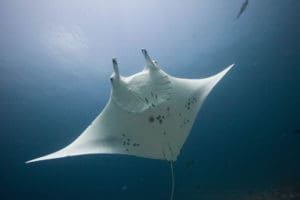
photo credit @HAMER
Oahu Pelagic Seabirds
Island species are vulnerable because they have a small geographic range and usually have low numbers, making them vulnerable to disease, fire, and population fluctuations. Human development and hunting also take a toll, and introduced predators such as rats and snakes can wreak havoc on populations that did not evolve under these pressures.
We photograph rare or uncommon species of seabirds. Our seabird photos are sent to the Institute for Bird Populations for identification, and many have been included in the online Birds of the Hawaiian Islands. As well as an important opportunity to document the seabird community in Hawaii, we also record information on seabirds interactions with various species of whales and dolphins.
Eyes on the Reef (EOR), Mālama Hawaii
Diseased or Bleached Coral? Click here to find out what to do next.
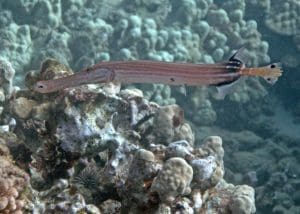
A trumpetfish hovers over bleached coral :(
“The future for corals is not something to be predicted by computer models; it is plainly obvious for all to see” Charlie Vernon – who discovered and described 20% of all coral species in the world. Reef Reminiscences (pdf)
Hawaii’s reefs span a huge area making it difficult to detect the early onset of coral bleaching, disease, Crown-of-Thorn (COT) and invasive species outbreaks. Reef users are essential in helping managers monitor reefs, providing the ‘eyes on our reefs’ needed to detect and report events. Wild Side crew are trained by EOR to inform, engage and train participants and promote visitor and community stewardship of our valuable marine resources. Conservation photography is used for documentation.
